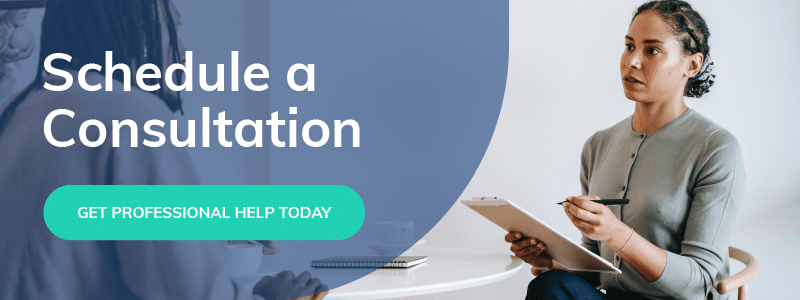Search by category, archive or keyword

Performing an intervention to address drug and alcohol addiction or mental health disorders can be an emotional experience for family, friends, and the intended patient. The emotional connection the intervention participants have to the intended patient is why it is suggested that those participating in an intervention collect and write their thoughts and feelings on paper rather than speak off the cuff.
For many, speaking to and having conversations with the substance user has often left family and friends confused, frustrated, filled with a false sense of hope, and almost always ends with being in the same position as before.
Preparing your thoughts and words before the intervention meeting with the addict, alcoholic, or loved one experiencing mental health disorders will allow you to communicate more effectively with them. When did you last talk with your loved one, and they simply listened?
There is a significant difference between reading a letter to someone versus speaking out whatever comes to mind while being interrupted and challenged by the person you are trying to speak with.
Gathering your thoughts and feelings in a letter will make it much easier to communicate essential things on your mind. Preparing intervention letters before the intervention prevents family members from negatively reacting to their dysfunctional family role during the intervention. Unfortunately, many interventionists have tried to reinvent the wheel on what an intervention letter should consist of. Many still believe in reminding the addict, alcoholic, or person with mental health disorders of their mistakes.
Like every other interventionist, we at Family First Intervention initially outlined our letters by pointing out mistakes made by the intended patient when building our curriculum. We quickly realized there are far superior ways to communicate to achieve engagement and acceptance of help.
There are various suggested ways for writing an intervention letter, and not all strategies are equally effective. Your goal is for the family to read their thoughts and the intended patient to listen, not react, and accept help. A confrontational letter, for example, may put your loved one on the defense and lead to interruptions and challenges of the letter’s content. An angry person is far less likely to accept help at the intervention.
Most addicts and alcoholics, and even those with mental health disorders, often blame everyone in the room during the intervention on some level for their problems. Whether they say it or not, they think that the people there, for the most part, have had a hand in making them feel the way they feel.
In addition to having resentment toward most people in the room, the intended patient feels unloved. A goal of the intervention letter is to engage that love and to own certain things that may have caused the intended patient to harbor resentment. It does not have to be accurate that anybody did anything to cause your loved one to blame those in the room for their problems. Whether true or false, It is the perception of the person with substance use or mental health disorder.
What matters is that they think that, and we must redirect that to engagement and listening from the intervention participants and the intended patient.
Through many years of trials and tribulations and utilizing evidenced-based intervention strategies, here is what we have found to be the most effective way to write and read an alcohol, drug, or mental health intervention letter.
In this blog on writing an intervention letter, we will look at the following:
- Why you need a professional interventionist
- Making a connection with the addict, alcoholic, or person struggling with mental health
- The apology and acknowledgment of mistakes by friends and family
- A simple request for help
- A sample intervention letter
- An additional letter on consequences, accountability, detachment, & boundaries
Why do we need a Professional Interventionist? Why can’t we just talk to them and do the intervention ourselves?
Many families ask why they can’t confront their loved ones without a professional interventionist. The quick answer is you absolutely can. The long answer is you explaining why you think you can do that and why you feel the need to. As you will realize from reading this article, the most significant benefit your family will receive from retaining a professional is having someone knowledgeable in family systems, addiction, and mental health, and most importantly, someone unaffected by your family and loved ones. Your loved one is punishing your family, and your family has become an unhealthy system. The intended patient has no history with the interventionist and does not hold them responsible for the family dysfunction causing the problems and preventing the solutions. The interventionist can see past the emotions and unhealthy decisions driven by maladaptive behaviors and coping mechanisms. When a family attempts to intervene without a professional, they say they can therapize themselves and address the struggles that have led them to this point.
Families do not realize the complexity of addiction, mental health, and family systems. Families also need to recognize the dysfunctional family role they have acquired, which is holding them back from improving the situation, is primarily the problem. Many family members believe their actions will pay off in the long run. Every family has a mix of family members that compromise the outcome. You will always have the few ready for professional help, and you will always have the others preventing the solution from coming in. The reason we write letters is to let go, if not for that moment in time, anything and everything you were doing as an unhealthy family that compromised the outcome. The intervention letter allows you and each family member to address your loved one in a way you never have.
Lastly, the intervention letter is a small piece of the intervention. Although significant, the letter is to help you start your recovery and see things from a different perspective while attempting to have your loved one agree with the help being offered. With the guidance of a professional, you will never have the opportunity to address your loved one in the way you will at the intervention with the letters. The letters are powerful and clinically structured to provide families with closure and healing while offering your loved one an invitation for help and rejoining the family with the others healthily and productively.
The Three Parts of An Intervention Letter
Part 1 – Connection with the Addict, Alcoholic, or Person Struggling with Mental Health
During an intervention, the intended patient will most likely be defensive. The goal is to disarm this resistance by affirming your loved one in the letter’s opening paragraph. This will result in a more receptive loved one willing to listen.
Most addicts, alcoholics, and people with mental health disorders believe an intervention is a blame-thrower event and are often on the defense when they see they have just walked into an intervention. This is not an intervention television show. When your loved one starts to hear affirmation and love, it lowers their stress level and the tension of the intervention participants.
Be sure your opening paragraph reminds the person with an addiction or mental health disorder how much they are loved. Reiterate the loved one’s positive qualities as well. This approach will help make the individual feel cared for and accepted. They will be positively caught off guard.

Part 2 – The Apology and Acknowledgment of Mistakes by Friends and Family
This is the absolute most crucial section of the letter, and most interventionists lose the intended patient with confrontation. Rather than using the second section to remind your loved one of how they made mistakes and did wrong, we have the family members own their mistakes and read what they wish they could have done differently.
We have tried both ways, and this approach is far more effective than confrontation. The biggest challenge we face with this section is when certain friends or family members either do not understand why we need to do this part this way or are just too angry or unwilling to admit there is anything they did wrong nor are they willing to acknowledge they could have or should have done things differently. We would never go as far as to say the problem you are addressing is the family’s fault. What we hope to accomplish by the end of our curriculum is individual family members owning their acquired dysfunctional family roles.
Once a family member can see the role they acquired and how it contributed to the problem, this section becomes clearer. The intended patient is but one member of a dysfunctional family system. While it can be entirely possible the problems all started with the family member who is using substances or carrying out untreated mental health, it is always exacerbated by unhealthy family roles. Other times, the unhealthy family roles are the result of a family member that has nothing to do with the addiction or mental health, and the family member using substance or experiencing mental health adopted that specific role as a coping mechanism to the dysfunctional family member or family experiences. The bottom line is that your entire family has a hand in the problem getting worse; for some, they are responsible for setting the ball rolling.
We are not here to point those fingers; we are here for you to own and clean your side of the street and bring your family back to health.
We understand how you feel and can help you develop a letter if you are willing to write one. For those who will not write this section, we can collaborate on an intervention letter that will send a compelling message while avoiding confrontation.
This section is what your loved one has longed for. That is attention, affirmation, ownership, and acknowledgment. Using the science of addiction and mental health and our experience, we know that addict or alcoholics uses substances and behave the way they do for many reasons. A person with mental health disorders acts out for similar reasons. The two biggest reasons are to escape reality and inflict harm to those they feel are the cause of the reality they have to run from.
Most of the time, a person with substance use or mental health disorder believes most of the people in the room of the intervention are the cause of their pain and struggles. There are times when they are correct. When those same people, who the intended patient blames for their problems, pile on more “look what you did” comments,” how do you think that will go?
We’re not saying the confrontational second paragraph has never worked. We are saying that it never worked better than the apology version. The apology version also prevents the interventionist from putting out the fires and redirecting the room from the angered responses by the intended patient and possibly the responses after by the now flared-up family members.
The person with an addiction or mental health disorder feels forgotten and left out; they feel like a victim, and they think they have been wronged. We are not trying to give into the victim mentality of the intended patient.
We are trying to remove the intended patient’s ability to flip the script and make it all about the family. How can your loved one argue with someone who just took ownership and apologized for their role in the problem?
When writing this section, we will ask family members to return to the section of our intervention manual that discusses family roles. How you have acted out your family role and how that may have contributed to the problem and not helping your loved one is an excellent place to start and own your apology.
It is best to set egos and pride aside and follow the science and the experience of what works. Confrontation and arguing are far less effective than building motivation and desire with love and affirmation.
There is an old saying among members of Alcoholics Anonymous:
“The alcoholic (or addict) drinks poison, waiting for others to die.”
Our point is the situation has become a family disease fueled by addiction, mental health, and adopted dysfunctional family roles. There is always something the family could have done differently. For many, it was waiting too long to intervene and help their loved ones.
One last thing to note about this section of the letter is that people with substance use and mental disorders can be in denial about the scope of their problems. Using evidenced-based communication skills to build trust, desire, and willingness is better than making a case against their denial.
Trained intervention professionals can help you understand the importance of this during the intervention letter writing section of the family day preparation. Depending on where the intended patient is in the stages of change, there are different ways to communicate with them.

Part 3 – Simple Request for Help
This is a concise, sweet, and simple section. The intervention participants will acknowledge their need for help while asking their loved ones to join them on a path to recovery.
In this section, you are never to lie to the substance user or person struggling with mental health, and with the help of the interventionist, you do not have to give every last detail of the treatment plan as it may raise objections and resistance.
Most importantly, never quantify treatment. In other words, never promise a set number of days, and never tell your loved one to try it for thirty days. This is 100% guaranteed to blow up on you later.
In other words, you do not have to give them a specific time frame for their departure or exaggerate how great things will be when they arrive.
All sections of the intervention letter will require the family and friends to brainstorm the most effective content with the professional interventionist.
In our sample letter, we have included an example of part 2 with an apology and confrontational approach.
Sample Intervention Letter
Part 1
Dear Mark,
You are my son, and I love you very much. I remember when your mother and I discovered we were having a child. The life and future of someone I had never met flashed before me. I thought of how I would try my hardest to be the best father I could be.
The day we found out we were having a boy brought me to tears of happiness. I remember holding you for the first time, and although I was terrified, I knew I would never let go. As you started growing up, I cherished all of the little moments, and although I may not have said it enough, you always made me happy and proud.
One of my many favorite memories of you as a child was when you won the Little League baseball championship. I will never forget you and your friends, just being kids without a care in the world. I was so proud of you, and when you turned around and I saw our last name on your jersey, it brought me to tears.
After the game, you ran up to me, hugged me, and said, “We won, Dad!” I’ll never forget you sleeping with your trophy for two weeks after you received it. As you grew older, I was amazed to watch you become the person you wanted to be, and I enjoyed listening to you talk about the things you wanted to be and do when you grew up.
Part 2
(Improved and More Effective Approach)
As parents, we are not instructed on how to be perfect. Your mother and I did our best with you and your sister. Although we know we made mistakes, we always try to be positive role models. Like most parents, I always worried about how your life would turn out, and I wondered if I did a good job of preparing you for the world.
As things started to change and unplanned events and choices entered our lives, I questioned where I may have gone wrong. Your life flashed through my head, looking for anything I thought I did wrong or could have done differently. I thought, “Did I hug you enough? Did I encourage you enough? Could I have listened to you more and done something about it? Should I have taken action when I didn’t?” No matter how we got here, we can return to a different place. Although I can’t change the past, I believe we can change the future if we are healthy.
Son, our family needs help, all of us. Nobody in this room has clean hands or a clean conscience. We regret not helping you sooner and apologize for not doing things differently. We are not experts and need to learn how to fix things. We know that other people do, and they are with us here today to help all of us.
Nobody in this room planned for this, nor did we want anything like this to happen. The reality is we are here, and we can help each other. This moment has been put off entirely too long, and we are ready to get help for ourselves starting today.
The Old Approach of Part 2
(Unfortunately, still used by most interventionists)
Lately, things have changed. Your behavior and your attitude toward others have been unacceptable. Last month, at Grandma’s surprise birthday party, we were all on pins and needles, wondering which version of you would show up. Sure enough, you were loaded, making a fool of yourself. Every time the phone rings, our heart skips a beat. When we do answer it, you are either asking for money or asking someone to help you out of a jam. The straw that broke the camel’s back was when you stole your sister’s wedding gifts and brought them to the local pawn shop, and then you blamed all of us for her calling the police on you. We can go on and on about what brought us here today, and it all goes back to you and your bad choices, along with being an alcoholic. We will not tolerate this anymore, and you need help.
Part 3
I want to keep my promise to you the first day I held you. That promise was never to let you go and to never give up on our family, regardless of the trials and tribulations that came with parenting. We ask that you keep an open mind with the professionals and us and join us in accepting help.
With love,
Dad
As you can see, the old way of doing Part 2 was harsh and aggressive. Although we did not give an example of how Part 3 is affected when Part 2 is confrontational, Part 3 changes too. In the confrontational approach, even though what is being said may be true, there is a time and place for those conversations, and they are not at the intervention. Every family member has a hand in what led us to this point. For many, it is not taking action sooner; for others, it could be enabling or preventing the family from dealing with the problem. Either way, the whole family has to set aside their differences and work together to ensure your loved one accepts help. The part of the intervention where the intervention letter is read is not the place to throw stones; that time will come after the family and the loved ones are in their respective recovery programs.

An Additional Letter: Consequences, Accountability, Detachment & Boundaries Letter
This is an additional letter read if your loved one refuses help and the family has exhausted their efforts. This section must often be more balanced with the loving and respectful connection intervention letter outlined above. You will not see a sample consequence, accountability, detachment, or boundary letter as you saw above with the emotional appeal letter. When families retain our services, they are sent letter-writing instructions for the emotional appeal letter ahead of time rather than the consequence letter.
Why?
Like the second part of the emotional appeal letter, we do things differently than other interventionists. Other interventionists just go through the motions of following the status quo. We continuously improve upon our curriculum and add and deduct things that work and do not work or just work more effectively. What we found was when we sent sample consequence letters, families just went with the samples. They did this because they were afraid to write their own. What ended up happening was they had a letter they could not follow through with. We realized this had a detrimental effect and compromised outcomes. We know today that we would rather you have weak and shallow boundaries you can follow through with than say things you cannot or will not do. When you list consequences and boundaries you can not enforce, you compromise the outcome for yourself and your loved ones.
This letter is read during the intervention if help is declined. It is also sent to the treatment center if help is accepted to present to the person with an addiction or mental health disorder via their treatment team should they become non-compliant or attempt to leave treatment AMA, ACA, or ASA, which is against medical, clinical, or staff advice. There is no reason to read this additional intervention letter at the intervention if the substance user chooses to accept treatment.
On a case-by-case basis, there are times when this intervention letter can be read to your loved one after they enter treatment as a therapeutic tool if the family, intervention company, and treatment team agree to it. It is only sometimes reserved when the patient tries to leave against medical, clinical, or staff advice.
If and when this intervention letter is introduced, it will depend on the patient’s current stage of recovery and whether or not their therapist or counselor feels it is appropriate for them to hear or read it.
Whether or not an intervention letter detailing consequences, boundaries, accountability, and detachment is read to the substance user, the family must discuss this letter and put pen to paper for their recovery.
The content of this letter can last a lifetime for a family if the addict, alcoholic, or loved one with mental health disorders reverts to old behaviors or active drug or alcohol use. The section details should include how you will end your family roles and your enabling them and how your relationship will change if they continue the substance use or do not comply with their mental disorder treatment.
Writing this out can be helpful for the family and can assist them in building upon their recovery in our Family Recovery Coaching Program after the intervention and beyond.
It is essential to remember a family can detach and still love the addict, alcoholic, or person struggling with mental health disorders and equally love themselves simultaneously. We are trying to help families understand that it is not okay to compromise their morals, integrity, and values by loving them with enabling and codependency, which would prevent them from accepting help.
You can detach and still tell them how much you care for them and how much friends and family love them. At the same time, you do not have to set yourself on fire to keep warm.
Need Help Writing an Intervention Letter? Our Team at Family First Can Help
A lot of thought and evidenced-based strategies go into the content of an intervention letter. There are many strategies to engage and diffuse the addict, alcoholic, or person struggling with mental health while bringing them to the point of considering a change.
“Interventions are not about the diagnosis but the behaviors and resistance to treatment.”
Taking the focus of the well-aimed darts off of the family and redirecting them toward the intended patient’s behavior and actions while not creating confrontation is not something an emotionally charged family has experienced or the ability to do.
Our experienced, professional interventionists can help families prepare a letter unique to each situation. Although the letter format is in place, its content will vary case-by-case. This is another reason we do not offer examples of the boundaries, consequences, accountability, and detachment letter.
We understand that the healing process comes quickly and takes much longer for others. Some families will never set boundaries. Regardless, we do our best to help families understand the process and ensure that their loved one struggling with addiction and mental health gets the help they need.
Be Sure to Understand the Right and Wrong Ways of Setting Up an Intervention
An intervention is not about how to control the substance user; it is about how to let go of believing you can.
“The most formidable challenge we professionals face is families not accepting our suggested solutions. Rather, they only hear us challenging theirs. Interventions are as much about families letting go of old ideas as they are about being open to new ones. Before a family can do something about the problem, they must stop allowing the problem to persist. These same thoughts and principles apply to your loved one in need of help.”
Mike Loverde, MHS, CIP




